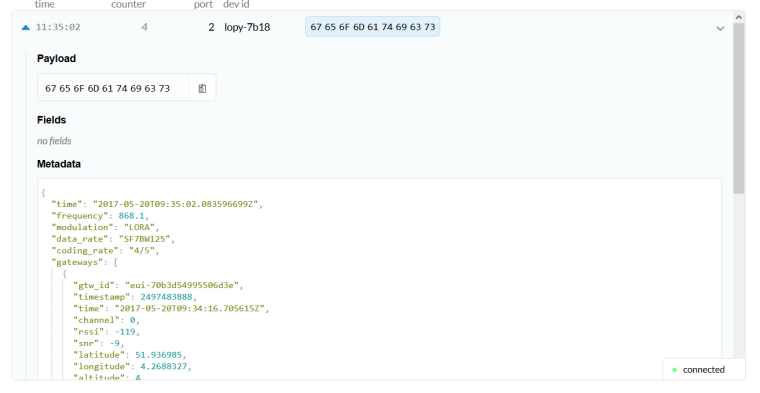LoRa live reception meter
-
Hi all, I have a question, is there already a code made to display the quality (live value, on a timed interval) of the LoRa reception (like a live connection meter) using it in a point-to-point setup? I have a couple (20+) of LoPy's that I want to use to monitor several hardware components/products inside a building on different locations. One LoPy acts as a nano gateway (hooked to a monitor pc) and several lopy's acts as nodes. I know the reception should theoretically be good, but I want to be 100% sure by measuring the LoRa signal from a distance node to the nano gateway. Is there any code already written first this??
My ultimatum goal would be an extra LoPy hooked to a laptop, walk around the building and measure the the distant quality of the 'local' Lora signal.
I hope someone can help my out, or point me in the right direction?
With kind regards, Jeroen
-
Dear PiAir and Rob (bedankt Rob ;)). Thx so much for your answer regarding this issue, I guess me best option is to write a custom script for this. All the best, Jeroen
-
You could use the http://ttnmapper.org site combined with the Android App. It also does local logging enabling you to analyse the data afterwards yourself.
The only big problem you might have indoors is that GPS might not work, so knowing exactly where you are inside the building, even using your smartphone as the device to determine your location could be tricky.
-
As far as I know the application you are describing does not exist yet.
However, you can create it yourself, for example using the LoRa metadata received at the gateway. This metadata once forwarded to your application server could be used as input for some kind of 'live connection meter'. The interval would then depend on the amount of 'test messages' you are sending.If you do not use ADR I believe the Lopy always uses SF7, otherwise it would take the higher SFs as well.
Example, look at SNR, RSSI, Gateway ID etc.:
